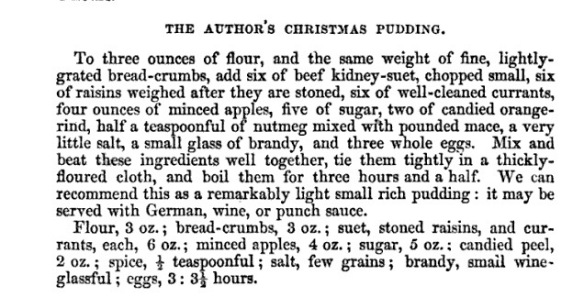 Rhubarb is Mongolian, Siberian even, cousins with the Chinese and with Tibetans on the side. This only seems odd to me because somewhere along the way rhubarb became ‘Britishified’, who would have thought our favoured nursery dishes: rhubarb crumble, tart, pie, rhubarb and custard, had their origins in the vicinity of the Himalayas and the grassy steppes. No one even ate it as a dessert in this country until the eighteenth century.
Rhubarb is Mongolian, Siberian even, cousins with the Chinese and with Tibetans on the side. This only seems odd to me because somewhere along the way rhubarb became ‘Britishified’, who would have thought our favoured nursery dishes: rhubarb crumble, tart, pie, rhubarb and custard, had their origins in the vicinity of the Himalayas and the grassy steppes. No one even ate it as a dessert in this country until the eighteenth century.
The Chinese have cultivated rhubarb as a medicinal plant for thousands of years, used to relax the digestion or as an astringent tonic for liver and gall bladder complaints, bad skin and even the plague. It was traded along the silk route and reached Europe in the 14th century and England in the 16th but it was sold only as a medicine.
The first recorded mention of an English food recipe is in Glasse’s ‘Compleat Confectioner‘ of 1760: “These tarts may be thought very odd, but they are very fine ones and have a pretty flavour….To make rhubarb tarts. Take stalks of English rhubarb, peel and cut it the size of gooseberries; sweeten it, and make them as you do gooseberry tarts.” So rhubarb must have begun to be establishes before this was published, but continued to be a bit of a novelty for some years yet. I believe the moment we really took rhubarb into our hearts was when we began to ‘force’ it as a winter foodstuff and that happened by accident in 1815. I love this story.
The horticulturists were growing rhubarb at the Chelsea Physic Garden, in London, as part of their collection of medicinal plants. A bed of rhubarb became buried under the earthy spoil of thrown up by some workman digging a trench. When they came to clear the up the mess they found the rhubarb had produced long thin stems in the light deprived environment. The gardeners ate it. I love that bit, I can just imagine them huddled around the long pink stems “Oi, Dave, come and look at this, do ya think it might be tasty winta vegetable?” They discovered it had a fine and sweet flavour. The news was hastily shared in the trade literature at the time and fervent gardeners began to experiment with buckets and all sorts. Joseph Whitwell, a market gardener from Leeds took up the baton and created a forcing business, constructing candle lit sheds devoted to the plant. His neighbours followed suit and the Rhubarb Triangle in West Yorkshire (between Wakefield, Morely and Rothwell) became famous for early forced rhubarb, with a special train laid on to rush the stems to London from December to March. It was known as ‘Champagne Rhubarb’ and they are still producing it, but sadly the train has gone.
Rhubarb now has a firm place in British cuisine as a dessert but top chefs are rediscovering it as a foil for new flavours (asparagus with rhubarb hollandaise, beetroot and rhubarb salad) and the latest craze, of course, is to add it to gin. I use it in many ways: rhubarb trifle; rhubarb Eton mess; as a savoury vegetable to add the sour element to Asian Lao fish soups; I also enjoy eating it raw with salt and chilli. My favourite is rhubarb fool which is so delicious it’s painful to wait for it to cool so why not make a cocktail while you do. My mother used to make vats of this (fool not the gin) which we scooped up with ginger biscuits and then turned the excess into ice-cream!
Rhubarb Fool (for 4) with Rhubarb Gin (for 1) on the side
I prefer a rougher, sharper fool so I don’t mash it up too much or add as much sugar as some I’ve seen (1/2 weight of sugar to weight of rhubarb, too much) but the choice is up to you.
400g rhubarb, roughly chopped
65g of caster sugar or vanilla sugar
a couple of drops of pure vanilla essence
300ml double cream, whipped
- Place the rhubarb in a WARMED pan with the sugar and the vanilla essence. DO NOT ADD WATER. Cover with a lid and heat gently on a low heat until tender which should take about 5-8 minutes depending on your rhubarb.
- Now taste for sweetness and add a tablespoon more sugar if you prefer. Drain the rhubarb in a sieve and reserve the juice in a bowl underneath. Allow to cool.
- Meanwhile, whip the cream to soft peaks.
- Mash the cooled rhubarb with a fork and add back ½ the juice (rhubarb syrup).
- Now make a Rhubarb Gin and Tonic – 50ml gin, about 25ml rhubarb syrup, tonic, a squeeze of lime juice and a sprig of mint if you have some.
- Fold the rhubarb into the cream and allow to cool in the fridge for at least an hour which will give you ample time to enjoy your cocktail (or mood-shifter as my husband would call it).
- Serve the fool. It won’t last for long.
More Ways with Rhubarb
The tartness makes stewed rhubarb a natural partner for creamy vanilla crème anglaise or ice cream
Bake it with a little water, caster sugar, two green cardamon pods & the zest and juice of an orange.
Rhubarb crème brulee, trifle or Eton Mess
Use it green as the sour ingredient in sour Asian fish soup
Smoothie- coconut water, rhubarb, mango, ginger
Ottolenghi’s Beetroot and Rhubarb salad
PS. Remember rhubarb leaves are poisonous do not eat them.

Rhubarb Gin and Tonic




